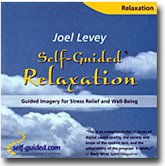Mindfulness for Beginners:
Bringing the Mind Home
The cultivation of mindfulness is a lifelong process, but we'd like to offer some helpful tips on developing mindfulness for beginners. Here are some useful distinctions to remember as you begin to integrate this vital tool for balance:
- Self-awareness is not the same as self-centeredness. When I am truly aware of myself, I am more in touch with everything around me, more available and sensitive. In fact, I can be more spacious and relaxed, and less self-protective.
- I can be aware of others only to the degree that I am willing to be aware of myself.
- Mindfulness requires being fully present, here and now. Because it is easy to drift into memories of the past or fantasies of the future, the pursuit of awareness in the here and now calls for practice and dedication. As we often say to our clients: "You can only manage the moment!" Every moment is an opportunity to increase your awareness.
A good place to begin is exactly where you are. So right now ... begin by bringing your mind home from wherever it may be straying. When the mind comes home, it becomes present and peaceful. With mindfulness, right now, you are aware that you are seeing these words, and may even smile to yourself with delight as you know that you know. You are aware of the texture and weight of the book in your hands, or of the thoughts and associations triggered by reading these words.
Outwardly, be aware of your surroundings. Notice what you see and hear in the world around you. Then, drawing your attention inward, first tune into what's most real and true for you as a physical being right now. Begin to mindfully sense your position and posture. Quietly observe the natural movement and flow of your breathing.
One helpful technique for beginners practicing mindfulness suggested by Vietnamese monk Thich Nhat Hanh is to mentally add the word "arriving" as you breathe in, and "home" as you breathe out, silently letting these words guide you into a steady focus on the present moment balancing of your own rhythmic breathing. Arriving... Home... Your mental energy will gradually begin to settle and stabilize in this way, with the calming, balancing effect of mindful breathing. Then direct your mindful attention to the flow of sensations and vibrations moving within and through your body.
Next, begin to open the focus of your attention to mindfully observe the flow of your thoughts, your internal conversations, and the emotional feelings that color this moment of your life. Simply, effortlessly, easily bring your mind home to focus and rest within yourself. Dwell in the calm, clarity, and peace of mind that's always here, mindfully observing the flow of experiences.
Having brought your attention back to yourself as home base, now you can open and expand your attention to reach back out into your world again. As you do this, maintain your awareness of your thoughts, feelings, breath, and body... mindfully present and balanced, focused and flowing from moment to moment.
If you're just beginning to practice mindfulness, remember that mindfulness is not some strange, abstract, or imaginary exercise. It's a proactive way to bring your life alive and in balance, and to discover what is real and true for you.
As we have been saying, because you can change only what you're aware of, mindfulness lays the foundation for living in greater balance and harmony. With a clearer, more objective, and appreciative view of your current reality, you'll be better able to recognize and evaluate your options for moving forward.
By helping you stay focused on what you are doing and thinking, and helping you recognize when you may be getting off track, the power of mindfulness helps continuously to counteract the tendency to get out of balance.
[Adapted from the book "Living in Balance" by Joel Levey
and Michelle Levey]
